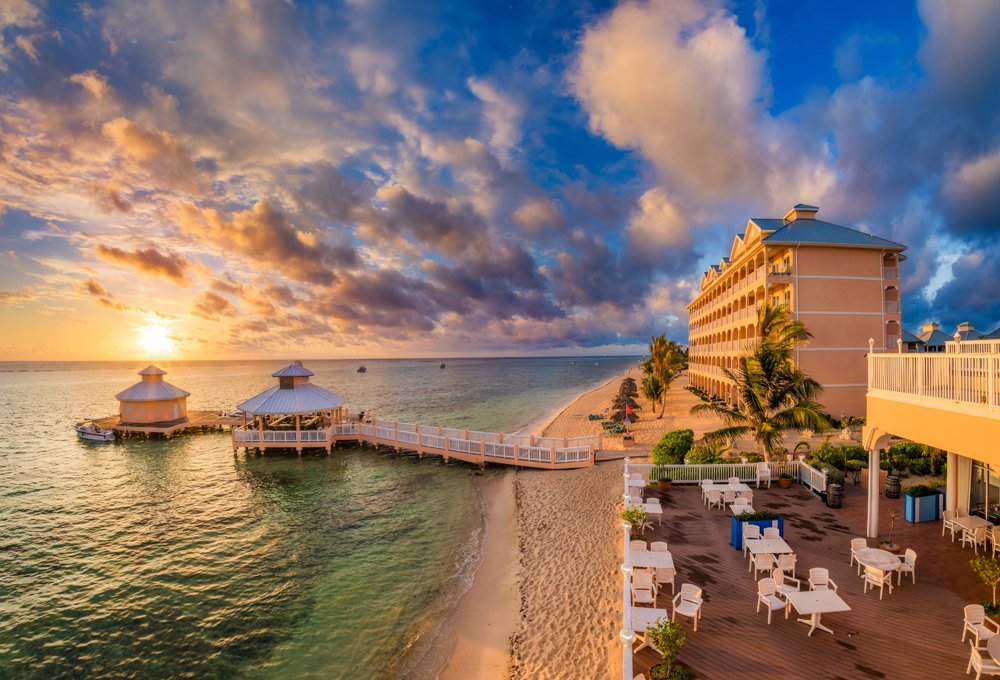
Nestled in the shimmering waters of the Western Caribbean Sea, the Cayman Islands are a British Overseas Territory that epitomizes tropical paradise.
Comprising three islands—Grand Cayman, Cayman Brac, and Little Cayman—this archipelago boasts an intriguing history alongside its breathtaking landscapes.
The islands were first sighted by Christopher Columbus in 1503, who named them “Las Tortugas” due to the abundance of sea turtles.
Over time, the islands became a haven for pirates, a stopover for Spanish and British naval forces, and eventually, a significant offshore financial center.
Geographically, the Cayman Islands are located south of Cuba and northwest of Jamaica, making them a prominent destination in the Caribbean.
Grand Cayman, the largest of the three, is the hub of tourism and commerce, famous for its luxurious resorts, stunning beaches, and vibrant marine life.
Cayman Brac offers rugged terrain and spectacular dive sites, while Little Cayman, the smallest island, is a sanctuary for wildlife enthusiasts and those seeking tranquility.
The Cayman Islands are renowned for their extraordinary natural beauty, from the world-famous Seven Mile Beach on Grand Cayman to the mystique of Bloody Bay Wall in Little Cayman, one of the world’s premier diving destinations.
Beyond the sand and sea, the islands are home to unique wildlife, including the endangered blue iguana and a variety of bird species.
What sets the Cayman Islands apart is not just their natural offerings but also their sophisticated infrastructure, which caters seamlessly to both adventure seekers and those looking to unwind in luxury.
The blend of British influence and Caribbean charm is evident in the islands’ culture, cuisine, and hospitality, making every visit a rich, multicultural experience.
Why It’s a Must-Visit Destination
The Cayman Islands offer more than just a picturesque escape; they provide a multifaceted experience that caters to all types of travelers.
Whether you’re drawn to exploring underwater wonders, indulging in culinary delights, or simply soaking up the sun on powdery beaches, the Cayman Islands promise an unforgettable journey.
Adventure enthusiasts will find a playground in the islands’ clear waters, home to vibrant coral reefs and captivating shipwrecks.
Meanwhile, those seeking relaxation can enjoy world-class spas, gourmet dining, and sunset cruises.
The islands also boast a calendar full of cultural and sporting events, ensuring that every visit is filled with memorable experiences.
With their unparalleled beauty, rich history, and warm hospitality, the Cayman Islands stand out as a must-visit destination in the Caribbean.
Whether you’re planning a family vacation, a romantic getaway, or a solo adventure, the Cayman Islands welcome you with open arms and the promise of an extraordinary escape.
Traveling to and Around the Cayman Islands
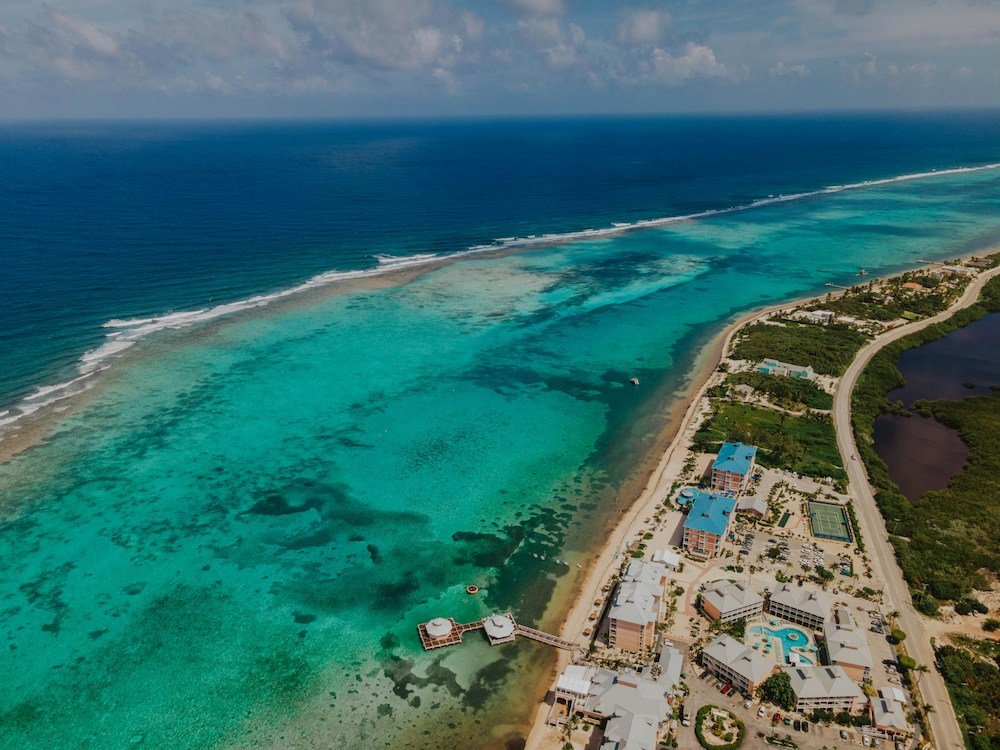
Best Time to Visit
The optimal time to visit the Cayman Islands is from December to April, when the weather is most favorable.
During these months, visitors can enjoy warm, sunny days with minimal rainfall, perfect for exploring the islands’ outdoor attractions and beautiful beaches.
This period, however, coincides with the peak tourist season, so expect higher prices for accommodations and more crowded attractions.
For those looking to avoid the crowds and save on travel expenses, the months of May and November offer a sweet spot with slightly warmer temperatures, occasional rain showers, but significantly fewer tourists.
How to Get There: Flights, Cruises, and Other Modes of Transportation
Flights: The Cayman Islands are accessible by air with Owen Roberts International Airport (GCM) on Grand Cayman serving as the main gateway. It welcomes direct flights from major cities in the United States, Canada, the United Kingdom, and other parts of the Caribbean. Smaller airports on Cayman Brac (Charles Kirkconnell International Airport) and Little Cayman (Edward Bodden Airfield) cater to inter-island flights.
Cruises: Cruising is another popular way to visit the Cayman Islands, with George Town serving as a prominent cruise port. Many Caribbean cruises include Grand Cayman as a stop, allowing passengers to spend a day exploring the island’s attractions.
Other Modes of Transportation: Although direct boat travel from other destinations is less common, private yachts and charters can dock at the islands’ marinas, subject to local immigration and customs clearance.
Navigating the Islands: Car Rentals, Public Transportation, and Other Local Travel Tips
Car Rentals: Renting a car is one of the most flexible ways to explore the Cayman Islands, especially for visiting lesser-known attractions and beaches. Major rental agencies are available at the airport and throughout Grand Cayman. Remember, driving is on the left side of the road, and a temporary driving permit is often required for visitors.
Public Transportation: On Grand Cayman, a public bus system offers an affordable way to get around the island. Buses run regularly on major routes, particularly along Seven Mile Beach and towards East End. However, public transport is limited on Cayman Brac and Little Cayman, making car rentals more practical.
Taxis and Ride-Sharing: Taxis are readily available, especially near the airport, hotels, and tourist hotspots. While more expensive than public transportation, they offer convenience and flexibility. Ride-sharing services, however, are currently not available on the islands.
Bicycles and Scooters: For short distances or less congested areas, renting a bicycle or scooter can be a fun and eco-friendly way to get around, particularly on Little Cayman and the quieter parts of Grand Cayman and Cayman Brac.
Travel Tips:
- Plan your transportation in advance, especially if visiting during peak tourist season.
- Always carry local currency (Cayman Islands Dollar) or US dollars for public transportation, as credit cards may not be widely accepted.
- Consider the islands’ relatively small size when planning day trips; many attractions are closer than they appear on a map.
Traveling to and around the Cayman Islands is relatively straightforward, with a range of options to suit different preferences and budgets.
Whether you’re flying in for a luxurious stay or cruising through on a Caribbean adventure, the islands’ beauty and charm are easily accessible.
Attractions and Activities
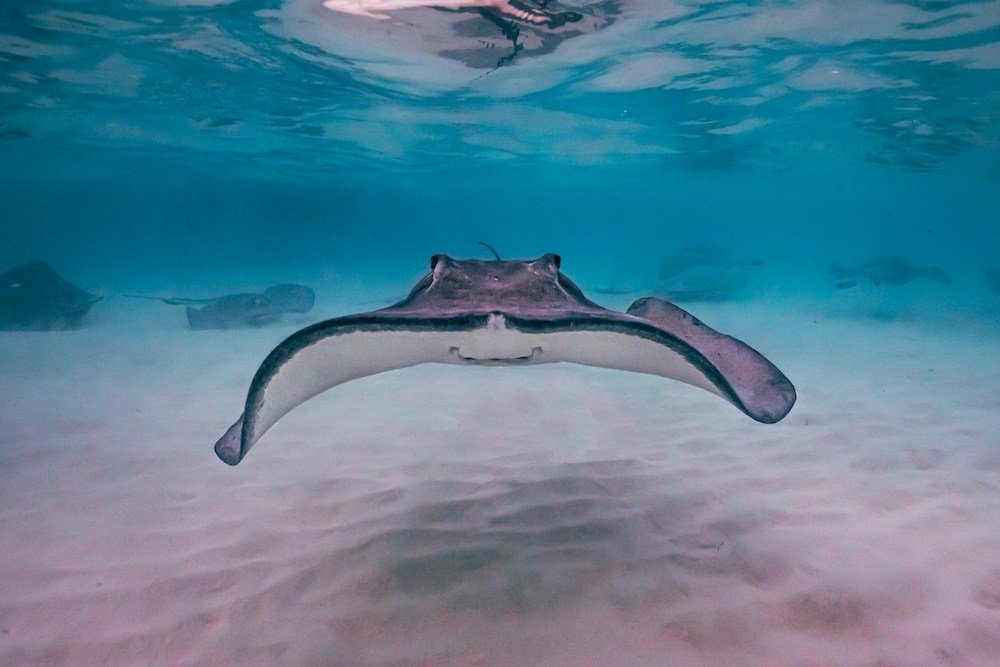
The Cayman Islands, a kaleidoscope of natural beauty and cultural richness, offer an array of attractions and activities for every type of traveler.
From the vibrant life in Grand Cayman to the untouched natural beauty of Little Cayman and Cayman Brac, these islands promise unforgettable experiences.
Grand Cayman: Seven Mile Beach, Stingray City, and the Capital, George Town
Seven Mile Beach: Renowned for its stunning beauty, Seven Mile Beach is often ranked among the best beaches in the Caribbean. This expansive stretch of soft white sand and crystal-clear waters is perfect for sunbathing, swimming, and water sports. The beach is also lined with a variety of resorts, restaurants, and beach bars, catering to every need.
Stingray City: A unique attraction where visitors can interact with friendly southern stingrays in their natural habitat. Located in a series of shallow sandbars, Stingray City offers a once-in-a-lifetime opportunity to feed, touch, and swim alongside these majestic creatures.
George Town: The capital city is not only the financial hub but also a cultural center. Visitors can explore duty-free shops, local markets, art galleries, and museums. The National Museum offers insights into the islands’ natural and cultural history, while the Cayman Islands National Gallery showcases local and international art.
Cayman Brac: Diving Spots, Nature Trails, and the Cayman Brac Bluff
Diving Spots: Cayman Brac is a diver’s paradise, known for its breathtaking underwater caves, shipwrecks, and coral reefs. The MV Captain Keith Tibbetts wreck is a popular dive site, offering an intriguing exploration opportunity.
Nature Trails: The island’s rugged terrain is crisscrossed with nature trails that lead through diverse habitats, offering bird watching and stunning scenic views. The Parrot Reserve is a notable spot for spotting the rare Cayman Brac parrot.
Cayman Brac Bluff: The Bluff is the island’s most prominent feature, rising to about 140 feet at its highest point. Hiking to the top rewards adventurers with panoramic views of the Caribbean Sea and the island below.
Little Cayman: Bloody Bay Wall, Quiet Beaches, and Wildlife Observation
Bloody Bay Wall: This is one of the world’s premier diving destinations, known for its dramatic underwater cliff that drops to depths of over 5,000 feet. The clear waters and abundant marine life make it a must-visit for divers.
Quiet Beaches: Little Cayman is famed for its secluded beaches, offering peace and tranquility. Point of Sand is particularly noteworthy for its pristine beauty and excellent snorkeling opportunities.
Wildlife Observation: The island is a haven for wildlife enthusiasts, with the Booby Pond Nature Reserve being a highlight. It’s home to one of the largest red-footed booby colonies in the Western Hemisphere, as well as frigate birds, iguanas, and other wildlife.
Cultural Attractions: Museums, Historical Sites, and Local Crafts
The Cayman Islands are rich in culture and history.
The Pedro St. James National Historic Site on Grand Cayman tells the story of the islands’ early settlers.
Local crafts can be found at various markets and shops, offering handmade jewelry, traditional thatch work, and art, providing a glimpse into the islands’ heritage.
Adventure and Sports: Diving, Snorkeling, Hiking, and More
Beyond the beaches, the Cayman Islands offer endless adventure and sports activities.
The crystal-clear waters are perfect for diving and snorkeling, revealing colorful coral reefs and marine life.
Hiking trails across all three islands offer everything from leisurely walks to challenging treks, showcasing the islands’ natural beauty.
Whether you’re drawn to the allure of the sea, the tranquility of a secluded beach, or the charm of local culture, the Cayman Islands offer a diverse range of attractions and activities to explore.
Accommodation Options

The Cayman Islands offer a diverse array of accommodation options to suit every preference and budget.
From the height of luxury to more modest, budget-friendly choices and unique stays that immerse guests in the natural beauty of the islands, there’s something for everyone.
Luxury Resorts and Hotels
For those seeking the pinnacle of comfort and service, the Cayman Islands are home to several world-class luxury resorts and hotels.
These establishments are often situated along the stunning coastline, providing breathtaking sea views and easy access to the beach.
Guests can expect top-notch amenities such as spa services, gourmet dining, private beaches, and infinity pools.
Renowned for their exceptional hospitality, these luxury accommodations ensure a stay that’s as unforgettable as the islands themselves.
Notable Luxury Accommodations:
- The Ritz-Carlton, Grand Cayman: This resort sets the standard for luxury, offering a golf course, a spa, several fine dining options, and a prime location on Seven Mile Beach.
- Kimpton Seafire Resort + Spa: A relatively new addition to Grand Cayman, offering modern luxury, vibrant design, and stunning sunset views.
Budget-friendly Accommodations
Travelers on a budget will find a variety of accommodations that don’t compromise on quality or location.
Budget-friendly options include guesthouses, smaller hotels, and apartments that offer comfortable lodging at a fraction of the price of luxury resorts.
These accommodations often provide essential amenities such as air conditioning, WiFi, and kitchen facilities, allowing guests to enjoy the beauty of the Cayman Islands without breaking the bank.
Examples of Budget-friendly Accommodations:
- Sunshine Suites Resort: Offers great value with cozy suites, an onsite restaurant, and walking distance to Seven Mile Beach.
- Eldemire’s Tropical Island Inn: A charming guesthouse in Grand Cayman that provides an intimate and authentic island experience.
Unique Stays: Villas, Bungalows, and Eco-Lodges
For a truly unique experience, consider staying in one of the Cayman Islands’ villas, bungalows, or eco-lodges.
These accommodations offer a more personal and immersive experience, often located in quieter, more secluded parts of the islands.
Villas and bungalows are perfect for families or groups seeking privacy and space, many featuring beachfront views, private pools, and full kitchens.
Eco-lodges cater to environmentally conscious travelers, offering sustainable lodging options that blend seamlessly with the natural surroundings.
These stays focus on minimizing their environmental impact and often provide opportunities for guests to engage with local conservation efforts.
Unique Accommodation Options:
- Little Cayman Beach Resort: Known for its dive packages, this resort offers cozy bungalows on a secluded stretch of Little Cayman.
- Cayman Brac Beach Villas: Provides private villas with direct beach access, perfect for a quiet retreat.
- Le Soleil d’Or: Set on Cayman Brac, this farm-to-table resort offers luxury in harmony with nature, including beachfront villas and garden cottages.
Dining and Culinary Experiences
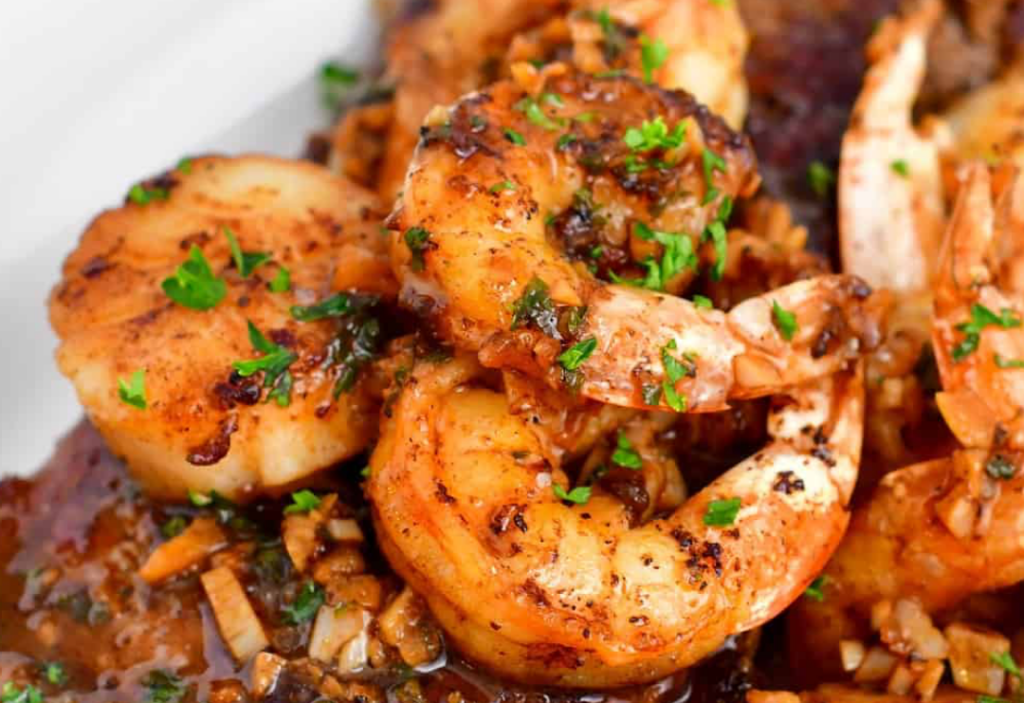
The Cayman Islands are not only a paradise for beach lovers and adventure seekers but also a haven for food enthusiasts.
The islands’ culinary scene is as diverse and vibrant as its culture, offering an array of dining experiences that cater to all tastes and preferences.
Overview of Cayman Cuisine
Cayman cuisine is a delightful fusion of Caribbean, British, and other international influences, reflecting the islands’ rich cultural heritage.
Fresh seafood is a staple, with conch, lobster, and snapper featured prominently in many dishes.
Traditional Caymanian dishes such as turtle stew, conch fritters, and coconut shrimp provide a taste of the local flavor, while the abundance of tropical fruits adds sweetness and zest to the culinary landscape.
The islands also have a growing farm-to-table movement, emphasizing fresh, locally sourced ingredients.
Recommended Restaurants and Dining Spots
Grand Cayman:
- Blue by Eric Ripert: Located in The Ritz-Carlton, Blue offers a seafood-centric menu crafted by the renowned chef Eric Ripert, showcasing the finest local and international ingredients.
- The Brasserie: A pioneer of the farm-to-table concept in the Cayman Islands, The Brasserie pairs its own garden-grown produce with freshly caught seafood, creating a unique dining experience.
- Sunshine Grill: An award-winning restaurant known for its casual atmosphere and excellent food, particularly the fish tacos and the legendary Sunshine Burger.
Cayman Brac and Little Cayman:
- The Captain’s Table: A favorite on Cayman Brac, this restaurant serves up local and international dishes in a friendly, laid-back setting.
- Pirate’s Point Resort Restaurant: In Little Cayman, this restaurant offers exquisite meals prepared by professional chefs, with a focus on fresh, local ingredients. The intimate dining experience is complemented by a selection of fine wines.
Food Tours and Culinary Events
Cayman Islands Culinary Tours: For those looking to dive deeper into the culinary culture of the Cayman Islands, various food tours are available, especially on Grand Cayman. These tours offer a guided taste of the islands, from street food to gourmet dishes, providing insights into the history and traditions behind the cuisine.
Culinary Events: The Cayman Islands host several culinary events throughout the year, attracting foodies from around the world.
- Cayman Cookout: Hosted by Eric Ripert at The Ritz-Carlton, this annual event features world-renowned chefs, sommeliers, and mixologists for a weekend of tastings, demonstrations, and dinners.
- Taste of Cayman Food & Drink Festival: This festival is one of the largest culinary events in the Caribbean, showcasing the best of Cayman cuisine with over 45 restaurants and beverage suppliers participating.
Shopping and Souvenirs
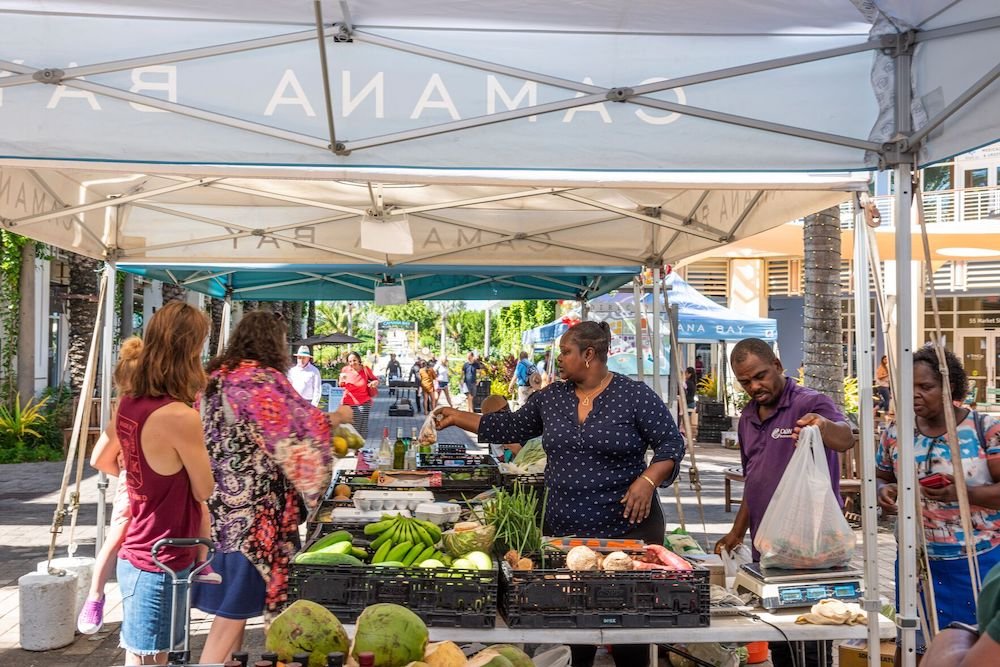
The Cayman Islands offer a diverse shopping experience that ranges from luxury boutiques and duty-free shops to local markets filled with crafts and souvenirs.
Whether you’re looking for high-end fashion, unique local art, or a memorable keepsake from your trip, the islands provide ample opportunities to find just what you’re looking for.
Best Places to Shop: Local Markets, Luxury Boutiques, and Shopping Centers
Local Markets: For authentic Caymanian souvenirs and crafts, local markets are a must-visit. The Camana Bay Artisan Market and the Craft Market in George Town offer a variety of handmade goods, including jewelry, artwork, and traditional thatch products. These markets not only provide a chance to pick up unique items but also to interact with local artisans and learn about the culture and traditions of the islands.
Luxury Boutiques: For those seeking luxury goods, the Cayman Islands do not disappoint. Camana Bay is a modern retail hub offering a selection of high-end boutiques, designer fashion, and luxury watches and jewelry, all duty-free. The Island Plaza and Bayshore Mall in George Town also feature a range of international brands and luxury items, making them perfect for indulgent shopping sprees.
Shopping Centers: For a more comprehensive shopping experience, the islands’ shopping centers and malls offer a mix of international retailers, local shops, and dining options. The Strand Shopping Center and Galleria Plaza on Grand Cayman provide a variety of stores selling everything from beachwear and souvenirs to electronics and cosmetics.
Cayman Islands’ Souvenirs and Local Crafts to Bring Home
When it comes to taking a piece of the Cayman Islands home with you, there are several must-have souvenirs and local crafts:
- Rum Cake: The Cayman Islands are famous for their delicious rum cake, a must-try treat that also makes a great gift for friends and family.
- Caymanite: This semi-precious stone, unique to the Cayman Islands, is used to create beautiful jewelry and decorative items, making it a distinctive and meaningful souvenir.
- Hot Sauce: Foodies will appreciate the variety of locally made hot sauces, featuring Caribbean flavors that are perfect for adding a bit of island spice to any dish.
- Local Art: From paintings and sculptures to handmade crafts, local art captures the spirit and beauty of the Cayman Islands, making it a thoughtful and unique souvenir.
- Thatch Products: Traditional thatch weaving is a part of Caymanian heritage. Items such as hats, bags, and mats are not only practical but also carry the island’s cultural legacy.
Practical Information for Travelers
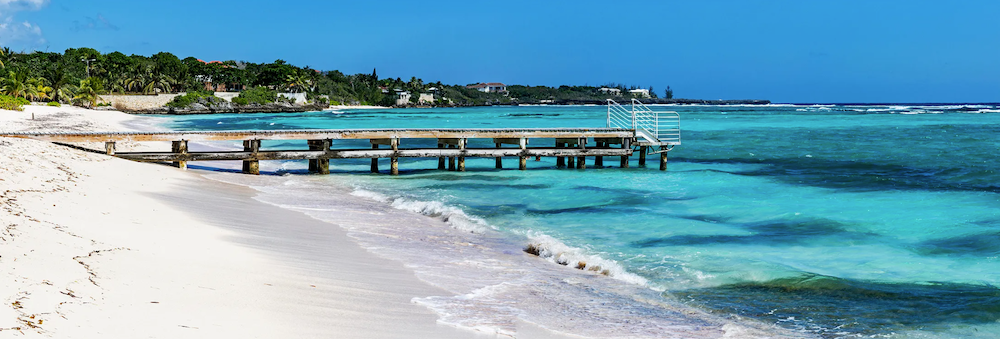
Visiting the Cayman Islands is an exciting adventure, but knowing some practical information beforehand can make your trip smoother and more enjoyable.
Here’s what you need to know about currency, language, health and safety, and staying connected during your visit.
Currency, Language, and Essential Travel Tips
Currency: The official currency of the Cayman Islands is the Cayman Islands Dollar (KYD), which is pegged to the US Dollar at a fixed rate of 1 KYD = 1.20 USD. US Dollars are widely accepted across the islands, but change may be given in KYD. It’s advisable to have some local currency for small purchases, especially if venturing beyond tourist areas.
Language: English is the official language of the Cayman Islands, spoken with a unique Caymanian accent. Communication is generally not a problem for English-speaking visitors.
Essential Travel Tips:
- Tipping is customary in the Cayman Islands, similar to the US, with 10-15% being standard in restaurants, taxis, and for services.
- The electrical outlets in the Cayman Islands are the same as the US (110 volts, 60 Hz), so travelers from other countries may need an adapter or converter.
- Drinking water is safe to drink from the tap throughout the islands.
Health and Safety: Vaccinations, Medical Services, and Travel Insurance
Vaccinations: No specific vaccinations are required for entry to the Cayman Islands for most travelers, but it’s always wise to be up-to-date on routine vaccines. Check with your healthcare provider or a travel medicine specialist for recommendations based on your health history.
Medical Services: The Cayman Islands have high-quality medical facilities, with hospitals and clinics on Grand Cayman and Cayman Brac. Little Cayman has a clinic for minor emergencies, with more serious cases transferred to Grand Cayman. It’s advisable for visitors to have travel health insurance that covers medical evacuation.
Travel Insurance: Investing in comprehensive travel insurance that covers medical expenses, cancellations, and other unforeseen circumstances is strongly recommended. Make sure the policy fits your specific needs, especially if you plan on engaging in water sports or other adventurous activities.
Connectivity: Internet Access, SIM Cards, and Staying Connected
Internet Access: WiFi is widely available in hotels, restaurants, and cafes throughout the Cayman Islands, particularly on Grand Cayman. Some places offer this service for free, while others may charge a fee.
SIM Cards: For those looking to use their mobile phones, local SIM cards can be purchased from providers like Flow and Digicel, offering prepaid data plans. Ensure your phone is unlocked before purchasing a local SIM card.
Staying Connected: The Cayman Islands are well connected, making it easy to stay in touch with friends and family. Internet cafes and business centers can be found in major tourist areas for those without mobile devices.
Conclusion
As we’ve explored throughout this guide, the Cayman Islands offer an unparalleled Caribbean experience, combining stunning natural beauty, rich cultural heritage, and world-class amenities.
From the powdery sands of Seven Mile Beach to the underwater wonders of Bloody Bay Wall and the rugged terrain of Cayman Brac Bluff, there’s a piece of paradise for every traveler.
Coupled with the islands’ culinary delights, vibrant shopping scenes, and a wide range of accommodations, the Cayman Islands truly cater to all tastes and preferences.
The Cayman Islands stand out for their exquisite beaches, clear turquoise waters, and the exceptional biodiversity that lies beneath their waves.
The islands are not just about sun, sea, and sand; they’re a hotspot for culinary adventures, cultural exploration, and eco-tourism.
Whether you’re diving with stingrays, sampling the local cuisine, or simply soaking up the sun on a secluded beach, the Cayman Islands offer a unique blend of relaxation and adventure.
The warmth and hospitality of the Caymanian people further enrich your visit, making you feel at home in this slice of Caribbean heaven.
Final Tips and Advice for a Memorable Trip
- Plan Ahead: While spontaneity has its charms, booking your accommodations and some activities in advance ensures you won’t miss out on the best the islands have to offer, especially during peak travel seasons.
- Respect the Environment: The natural beauty of the Cayman Islands is one of its greatest assets. Participate in eco-friendly practices, respect wildlife, and support conservation efforts to help preserve this paradise for future generations.
- Explore Beyond the Beach: While the beaches are indeed spectacular, the Cayman Islands have much more to offer. Delve into the islands’ history, explore the local art scene, and venture off the beaten path to discover hidden gems.
- Embrace Local Experiences: Engage with the local culture by attending cultural events, trying Caymanian cuisine, and interacting with residents. These experiences can enrich your visit and create lasting memories.
- Stay Safe: Follow local guidelines and regulations, especially when participating in outdoor and water-based activities. Ensure you’re adequately prepared for the sun and sea to enjoy your adventures safely.

FAQ’s About the Cayman Islands:
Why is Cayman Islands so expensive?
The Cayman Islands are considered expensive for several reasons.
Firstly, the islands have a high standard of living, which translates into higher costs for goods and services.
Since the Cayman Islands import a significant portion of their goods, including food and consumer products, import duties contribute to the overall cost.
Additionally, the tourism industry drives up prices, especially in areas frequented by tourists.
The lack of income, corporate, and sales taxes in the Cayman Islands means the government relies heavily on import duties and fees, further inflating prices.
Why are the Cayman Islands so famous?
The Cayman Islands are famous for their stunning beaches, crystal-clear waters, and excellent diving spots.
They are renowned for attractions like Seven Mile Beach, one of the Caribbean’s finest beaches, and Stingray City, where visitors can swim with stingrays.
The islands are also known for their luxury resorts, financial services industry, and as a tax haven due to the absence of direct taxes, attracting businesses and wealthy individuals worldwide.
Is Cayman Islands in USA?
No, the Cayman Islands are not in the USA. They are a British Overseas Territory located in the western Caribbean Sea.
The islands are self-governing under the monarchy of the United Kingdom, and while they maintain strong economic and cultural ties with the United States, they are not part of the US or its territories.
Can you drink alcohol in Cayman Islands?
Yes, you can drink alcohol in the Cayman Islands if you are 18 years of age or older. Alcohol is available for purchase at licensed bars, restaurants, and liquor stores.
However, it’s important to consume alcohol responsibly and be aware of local laws and customs regarding alcohol consumption, especially in public areas.
Why is Cayman Islands high risk?
The term “high risk” in relation to the Cayman Islands often refers to its classification in financial services, particularly concerning its reputation as a tax haven.
The islands’ lack of direct taxation and stringent privacy laws have historically made them attractive for offshore banking and financial activities.
This has led to scrutiny by international regulatory bodies concerned with tax evasion, money laundering, and financial transparency.
However, the Cayman Islands have made efforts to comply with international standards and improve their regulatory framework.
Is Cayman Islands rich or poor?
The Cayman Islands are considered rich in terms of GDP per capita, standard of living, and infrastructure.
The islands have one of the highest standards of living in the Caribbean, largely due to their prosperous tourism industry and status as a major international financial center.
However, like any community, there is a spectrum of wealth, and not everyone in the Cayman Islands is wealthy.
The government and various organizations work to address social and economic disparities within the population.
Is Cayman island safe to live?
Yes, the Cayman Islands are generally considered safe to live in.
The islands have a low crime rate compared to other Caribbean nations and are known for their stable political environment and effective legal system.
However, residents and visitors are advised to take standard safety precautions, especially in less populated areas and when engaging in activities like water sports.
What is the main occupation at Cayman Islands?
The main occupations in the Cayman Islands are related to the tourism and financial services industries.
These sectors are the pillars of the islands’ economy, with jobs ranging from hospitality, diving instructors, and tour operators to banking, insurance, and legal services.
The government and healthcare sectors also employ a significant portion of the population.
